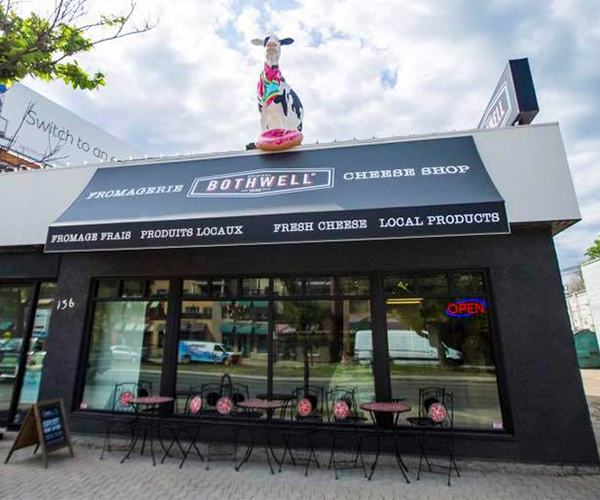By Stacey Stein
If you’re thinking which life skills to
impart upon your kids, cooking should rank at the top of the list. After all,
once kids leave the nest, they’ll need to figure out how to feed themselves several
times a day, every single day of their lives. But the ability to nourish
oneself isn’t the only reason to teach children the difference between a pot
roast and a stew, or how to safely use a butcher’s knife.
“Cooking
together helps kids develop healthier eating habits,” says registered dietitian
Shannon Crocker. This is a bonus with kids who are selective eaters, she adds.
There are other benefits, too. Crocker, a mom of two teens, notes that shared
time in the kitchen is a good way to connect as a family. “I find we have great
conversations that come up naturally as we’re cooking together,” she says.
With March
Break coming up, you’ll have the perfect opportunity to bond with your kids
while teaching them how to flip a pancake or chop an onion. With that in mind,
here’s an age-by-age guide on how to introduce your kids to the joys of
cooking.
Ages two to five
Kitchen skills
At this age, kids’ fine motor skills are
developed enough that their little hands can handle tasks like kneading, stirring,
spreading, placing toppings, mixing ingredients, greasing pans, whisking, scooping,
and pouring dry ingredients. You can even introduce cutting and chopping skills
– use a wave slicer to chop soft foods and a cookie cutter to cut up dough,
soft fruit and cheese.
Preschooler-friendly recipes
Try making this baked
banana chip oatmeal to go and let your preschooler take on pouring and
stirring the dry ingredients. Tiny tots will also have a blast mashing up the
bananas and can help line the muffin tins and sprinkle chocolate chips. Tip: Keep
hot muffin tins out of reach while they’re cooling.
Most kids love yogurt drinks, which are
often high in sugar. These strawberry
coconut overnight chia oats are not only a great low sugar alternative, they’re
also versatile – eat them for breakfast or as a healthy snack.
General safety tips
- Find a safe way to get your
little ones to table height (like a learning tower or booster seat)
- Teach your kids to ask an adult
if it’s okay before eating any ingredients
- Start teaching your little ones
hygiene habits like hand washing, not touching their face, and pre-washing work
surfaces
Ages
six to eight
Kitchen skills
Young grade school kids can start taking
their kitchen skills to the next level. At this age, kids can learn how to
crack eggs, pour batter into a pan (or in muffin tins), and can peel and grate some
ingredients. When it comes to chopping skills, kids this age can start cutting
apples with a slicer and chop harder foods with a wave slicer (be sure to
supervise.) You can also teach young school-aged kids how to measure ingredients.
Little kid-friendly recipes
Put your little ones’ cutting skills to the
test with this caramel
apple dip with spice tortilla chips. Using clean kitchen scissors, children
can cut the tortillas into a wedge shape. They can also safely slice the apples
using an apple slicer instead of a knife.
Universally loved by the school-aged set,
spaghetti and meatballs get a fun twist in this
recipe. Made in muffin tins, these spaghetti and meatball bites are easy for
little hands to prepare. Kids can take on cracking the egg, filling the muffin
tins with pasta, adding the meatball, and topping it off with cheese. Basically,
making the entire bite!
General safety tips
- Have a low stool easily
accessible for your mini chef to reach the counter (keep a collapsible stool
nearby)
- Teach about checking if food
has cooled down before doing a taste test
- It may be tempting, but no one
likes a tummy ache: no eating raw batter!
- Teach how to safely stir food
while it’s cooking on the stovetop
Ages
nine to 12
Kitchen skills
Older school-aged kids are ready to master
more complex skills, laying the groundwork for them to make a wider range of
recipes. At this age, kids can mix thicker recipes (like cookie dough), peel,
chop, grate and slice, and learn how to use appliances like an electric juicer or
a hand mixer. Older kids can also learn cooking basics like how to fry eggs,
flip pancakes, and separate egg whites. You can also teach other skills like
how to halve or double a recipe, and an important one – how to clean up!
Big kid-friendly recipes
These apple
pie cottage cheese pancakes incorporate all kinds of advanced kitchen
skills. To teach kids how to safely use heat, let them first practice flipping
with a cool pan.
Apple
cheddar quesadillas incorporate the same advanced kitchen skills. This
recipe will help big kids master important skills like testing for heat using
water droplets and removing the pan from the heat if it gets too hot.
General safety tips
- Teach kids about using a stool
to retrieve ingredients stored out of reach before getting started (to prevent reaching
over a hot stove)
- Make sure long hair is tied back
- Avoid long, loose sleeves if
using the stovetop
- Keep pot handles turned towards
the back of the stove
Teens
Kitchen skills
You can groom your teens to become
full-fledged cooks. At this age, kids can master most advanced kitchen skills
with detailed instructions and supervision, before working in the kitchen
independently. Teach your teen how to choose the right knife for different
tasks, how to safely slice, dice, and chop, and how to use handy appliances
like a slow cooker.
Teen-friendly recipes
Coffee-loving teens will enjoy this
protein- and calcium-rich mocha
smoothie. It only takes a few minutes to whip up, making this a perfect
go-to drink for time-crunched teens prone to skipping breakfast. Tip: mixing in
a banana will give the smoothie a thicker consistency, along with a fibre
boost.
This hearty pasta supreme
is easy for teens to make and will feed the entire family. Be sure to first
teach your teenager how to drain an entire pot of cold water into a colander so
they are comfortable when it comes to draining boiling water.
General safety tips
Teach teens how to:
- Clean up spills on the floor
right away to avoid slipping hazards
- Bring out hot trays for
flipping, testing, etc. (never reach into a hot oven)
- Put a lid on a pot if there is
a flame (instead of pouring water on a greasy fire)
- Use a fire extinguisher
Final
thoughts
Crocker recommends
cooking with kids when you aren’t rushed and have some time, so avoid a
weeknight when you’re scrambling to get to an activity. Another tip is to start
off small. “It doesn’t have to be a meal – it can be a baked good, a smoothie
or a simple snack,” she says.
And no matter
what age your kids are, patience is key to enjoying your time together in the
kitchen. “Try not to get frustrated,” Crocker advises. “Expect that it’s going
to be messy and it’s going to take more time.”





